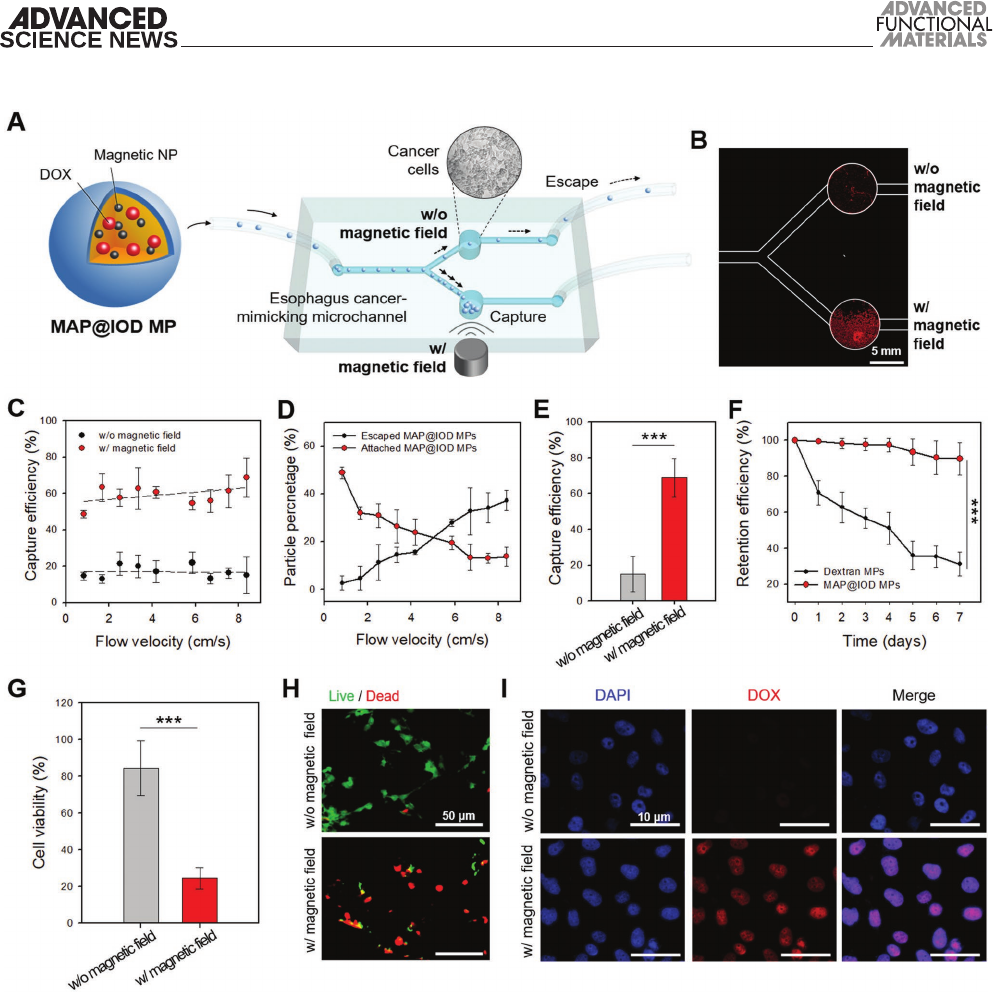Mussel protein increases esophageal drug delivery
Professor Yun Kee Jo,
Kyungpook National University (Major in Biomedical Convergence Science & Technology), and Professor Hyung Joon Cha of
POSTECH succeeded in developing new protein microparticles for drug delivery that can control movement in the direction of magnetic fields by giving magnetic field.
The findings, which secured original intellectual property rights through domestic patent registration, will be published on September 30 as a cover paper for Advanced Functional Materials (18.808), a world-renowned journal in the field of material science.
The esophagus is a passageway organ in a very fluid environment that rapidly flows water and food consumed through peristalsis. In the event of disease in the esophagus, it is difficult to treat drugs in the lesion area due to the fluid dynamics shear force (force parallel to the surface within the target object) and drag (resistance received by the fluid when objects move or stop in the flowing fluid).
Existing magnetic field-sensitive drug delivery systems were difficult to maintain drugs for a long time in the lesion area as removing the magnetic field after drug delivery to the target site could easily be detached and lost due to the fluid environment in the fluid environment in the body.
Adhesive microparticles developed by the research team are innovative drug delivery systems that combine "magnetic field sensitivity" and "mussel adhesion protein" to deliver drugs locally and in the long term even in passageways of the environment with very fast flow rates such as the esophagus.
Iron oxide was mounted on microparticles to be delivered locally to the lesion area by a magnetic field, and the microparticles were maintained in the lesion area for a long time even after the magnetic field was removed with strong underwater adhesion of the mussel-adhesive protein.
Studies have shown that local transmission efficiency is more than five times higher than when no magnetic field is applied, and subsequently confirmed that the drug is maintained at the transmission site for a week even if the magnetic field is removed.
Microparticles developed by the research team can also be observed by magnetic resonance imaging (MRI) due to the nature of iron oxide, making it easier to observe local transmission to the target lesion site as they can check the location of microparticles in real-time. In addition, the research team experimentally verified the high anticancer treatment efficacy by installing doxorubicin, a chemotherapy drug widely used to treat cancer, inside microparticles, to reduce the survival rate of cancer cells to 16.6%.
Professor Yun Kee Jo said, "The microparticles developed through this study are significant in that they can easily deliver drugs to the desired target site and maintain drug treatment effects for a long time even in a dynamic environment where fast fluid flows." In addition to the esophagus, it is expected to expand the scope of application to various organs in the body where digestive fluid or body fluids flow, such as the small intestine and large intestine, he said.
The study was carried out as part of an excellent new research project supported by the Ministry of Science and ICT, a mid-sized research project, and a health and medical technology development project supported by the Ministry of Health and Welfare.
